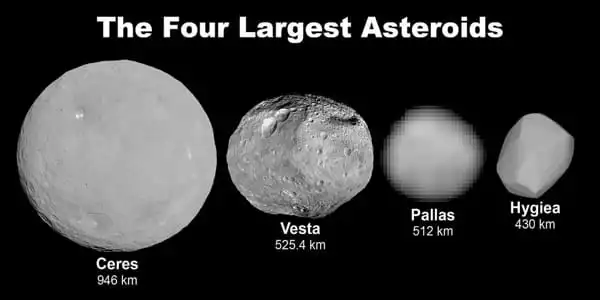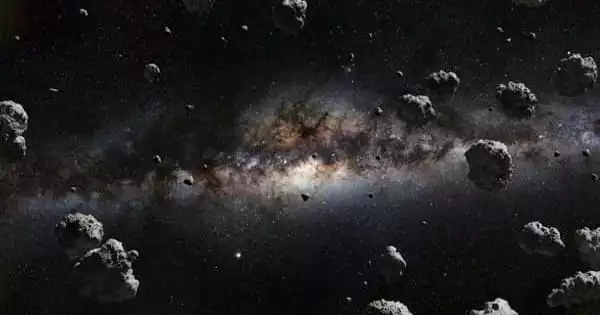Astronomers have photographed 42 of the largest objects in the asteroid belt, which lies between Mars and Jupiter. The observations reveal a wide range of unusual shapes, from spherical to dog-bone, and are assisting astronomers in tracing the origins of asteroids in our Solar System.
Astronomers have imaged 42 of the largest objects in the asteroid belt, which lies between Mars and Jupiter, using the European Southern Observatory’s Very Large Telescope (ESO’s VLT) in Chile. Never before had such a large number of asteroids been imaged in such detail. The observations reveal a variety of unusual shapes, ranging from spherical to dog-bone, and are assisting astronomers in tracing the origins of asteroids in our Solar System.
The detailed images of these 42 objects represent a significant advancement in the exploration of asteroids, made possible by ground-based telescopes, and contribute to answering the ultimate question of life, the Universe, and everything.
“So far, only three large main-belt asteroids, Ceres, Vesta, and Lutetia, have been imaged with a high level of detail, as they were visited by the NASA and European Space Agency space missions Dawn and Rosetta, respectively,” explains Pierre Vernazza of the Laboratoire d’Astrophysique de Marseille in France, who led the asteroid study published today in Astronomy & Astrophysics. “Our ESO observations have provided sharp images for 42 additional targets.”
Astronomers have photographed 42 of the largest objects in the asteroid belt, which lies between Mars and Jupiter. The observations reveal a wide range of unusual shapes, from spherical to dog-bone, and are assisting astronomers in tracing the origins of asteroids in our Solar System.
Because of the previously small number of detailed observations of asteroids, key characteristics such as their 3D shape or density remained largely unknown until now. Between 2017 and 2019, Vernazza and his team set out to fill this void by conducting a thorough survey of the asteroid belt’s major bodies.
The majority of the 42 objects in their sample are larger than 100 kilometers in diameter; in particular, the team imaged nearly all of the belt asteroids larger than 200 kilometers in diameter, 20 out of 23. Ceres and Vesta, which are approximately 940 and 520 kilometers in diameter, respectively, were the two largest objects probed by the team, while Urania and Ausonia, which are approximately 90 kilometers in diameter, were the two smallest asteroids.

The team discovered that the observed asteroids are primarily divided into two families by reconstructing the objects’ shapes. Some are nearly perfectly spherical, such as Hygiea and Ceres, while others have a more unusual, “elongated” shape, with the “dog-bone” asteroid Kleopatra reigning supreme.
The team discovered that the densities vary significantly across the sample by combining the shapes of the asteroids with information on their masses. Lamberta and Sylvia are among the four least dense asteroids studied, with densities of about 1.3 grams per cubic centimeter, or about the density of coal. Psyche and Kalliope have densities of 3.9 and 4.4 grammes per cubic centimeter, respectively, which are higher than diamond’s density (3.5 grams per cubic centimeter).
This large density difference suggests that the asteroids’ composition varies significantly, providing astronomers with important clues about their origin. “Our observations strongly suggest that these bodies have migrated significantly since their formation. In short, such a wide range of composition can only be explained if the bodies formed in different parts of the Solar System “One of the study’s authors, Josef Hanu of Charles University in Prague, Czech Republic, explains. The findings, in particular, support the theory that the least dense asteroids formed in remote regions beyond Neptune’s orbit and migrated to their current location.
The sensitivity of the Spectro-Polarimetric High-contrast Exoplanet Research (SPHERE) instrument mounted on ESO’s VLT enabled these discoveries. “With the improved capabilities of SPHERE and the fact that little was known about the shape of the largest main-belt asteroids, we were able to make significant progress in this field,” says co-author Laurent Jorda of the Laboratoire d’Astrophysique de Marseille.
With ESO’s upcoming Extremely Large Telescope (ELT), currently under construction in Chile and set to begin operations later this decade, astronomers will be able to image even more asteroids in fine detail. “ELT observations of main-belt asteroids will allow us to study objects with diameters as small as 35 to 80 kilometers, depending on their location in the belt, and craters as small as 10 to 25 kilometers,” Vernazza says. “A SPHERE-like instrument on the ELT would even allow us to image a similar sample of objects in the distant Kuiper Belt. This means we’ll be able to characterize the geological history of a much larger sample of ground-based small bodies.”





